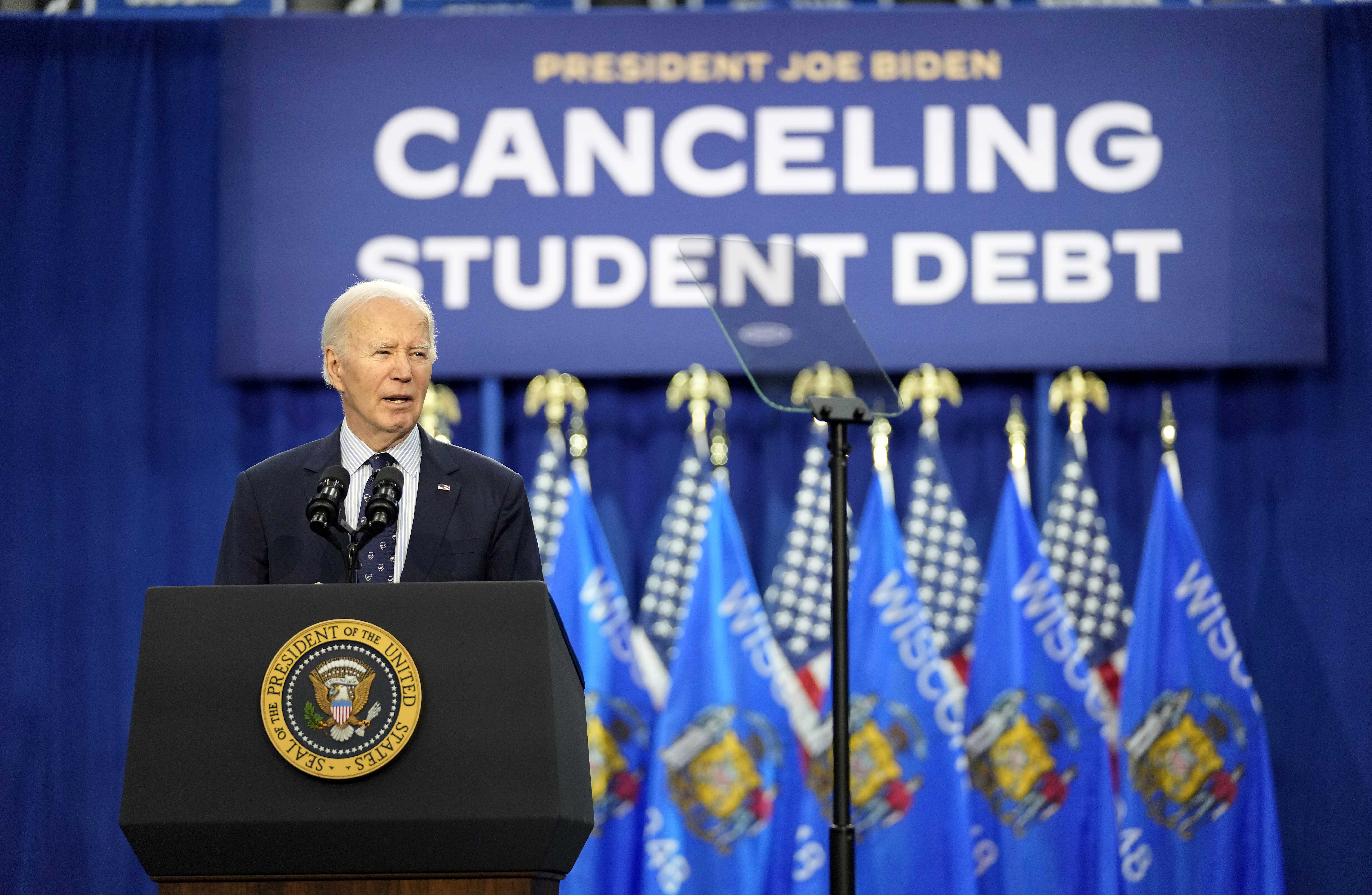Biden still plans to restart federal student loan payments in February
WASHINGTON -- President Joe Biden still plans to restart federal student loan payments in February, resisting pressure from some fellow Democrats who continue to call for an extension of coronavirus pandemic relief benefits.
"We're still assessing the impact of the Omicron variant, but a smooth transition back into repayment is a high priority for the administration," said White House press secretary Jen Psaki when asked Friday whether the administration would consider extending the student loan payment pause.
"In the coming weeks, we will release more details about our plan and will engage directly with student loan borrowers to ensure that they have the resources they need and are in the appropriate repayment plan," she added.
Borrower balances have effectively been frozen for nearly two years, with no payments required on most federal student loans since March 2020. During this time, interest has stopped adding up and collections on defaulted debt have been on hold.
MORE: US Department of Education overhauls Public Service Loan Forgiveness program

Both Biden and former President Donald Trump took actions to extend the pause. Most recently, Biden moved the payment restart date from September 30, 2021, to January 31, 2022, but the administration made clear at the time that this would be the final extension.
Some Democrats urge Biden to extend relief
Senate Majority Leader Chuck Schumer of New York, Sen. Elizabeth Warren and Rep. Ayanna Pressley, both of Massachusetts, have been pressuring Biden to extend the student loan repayment pause.
"The pause on federal student loan payments, interest, and collections has improved borrowers' economic security, allowing them to invest in their families, save for emergencies, and pay down other debt," the lawmakers wrote in a letter to the President last week.
Before the pause, borrowers were paying an average of $393 a month for their federal student loans, according to an analysis from the Roosevelt Institute, which was provided to Schumer and Warren at their request. That means that collectively, borrowers will be paying roughly $7 billion a month, or about $85 billion a year, once the payments resume.
Schumer, Warren and Pressley are also continuing to urge Biden to take further action and cancel up to $50,000 of student loan debt per borrower.
Biden said during the presidential campaign that he would support canceling $10,000 per borrower, but has not taken action to do so beyond directing federal agencies to conduct reviews on whether he has the authority.
He has repeatedly resisted pressure to cancel up to $50,000 per borrower since taking office -- making it very clear during a CNN town hall early in the year that he does not support the idea.
Separately, since taking office, Biden's Department of Education has made it easier for people who were defrauded by for-profit colleges to seek debt relief. It has also temporarily expanded the Public Service Loan Forgiveness program that cancels outstanding debt for qualifying public service workers after they have made payments for 10 years.
Preparing for payments to resume
Most borrowers with federal student loans have not had to make any payments since March 2020. Direct Loans as well as PLUS loans, which are available to graduate school students and parents on behalf of their children, are eligible for the benefit. Some federal loans that are guaranteed by the government but not technically held by it, known as Federal Family Education Loans, or FFEL, did not qualify. Generally, those were disbursed prior to 2010.
The relief is even more significant for those who work in the public sector and may be eligible for federal student loan forgiveness after 10 years. They are still receiving credit toward those 10 years of required payments as if they had continued to make them during the pandemic, as long as they are still working full time for qualifying employers.
Borrowers will receive a billing statement or other notice at least 21 days before their payment is due, according to the Department of Education. Those who had set up auto payments may need to notify their loan servicing company they want those to continue.
If federal student loan borrowers can no longer afford their monthly payment, they may be eligible for an income-driven repayment plan. Under those plans, which are based on income and family size, a monthly payment can be as low as $0 a month. The Department of Education has more information online about the payment restart.
The-CNN-Wire ™ & © 2021 Cable News Network, Inc., a WarnerMedia Company. All rights reserved.








